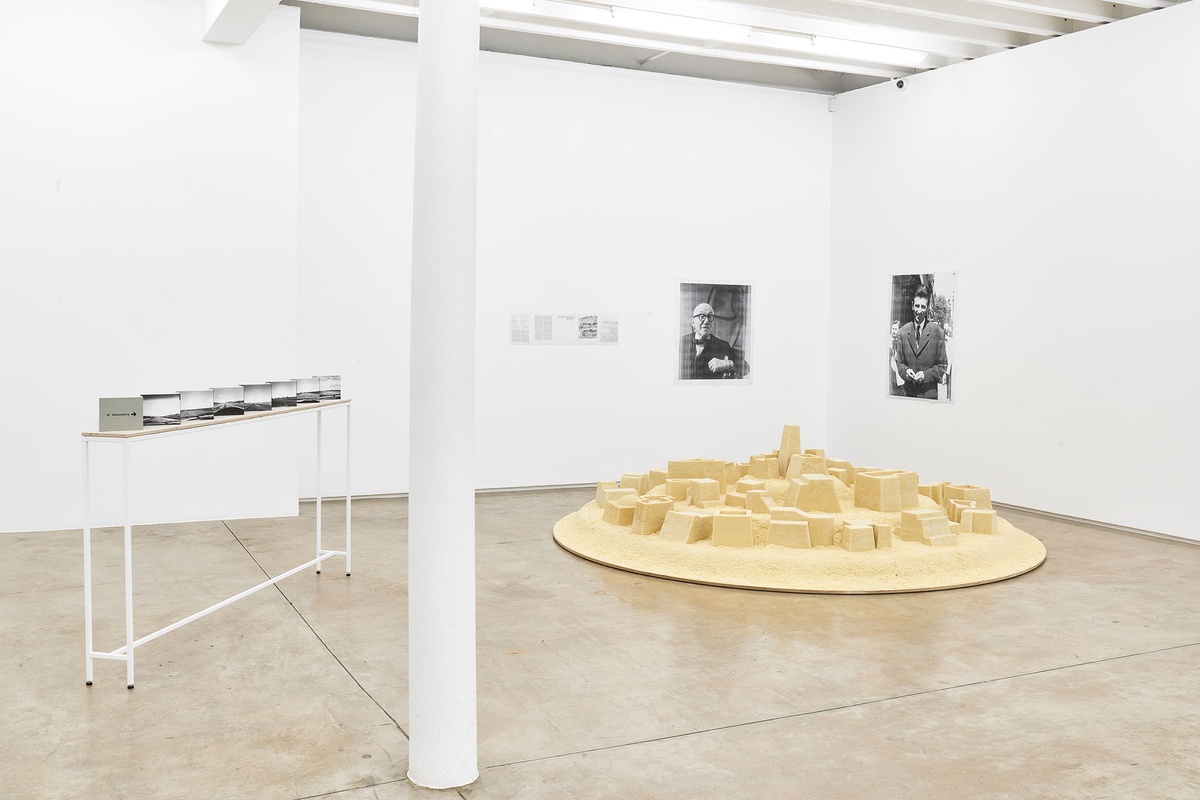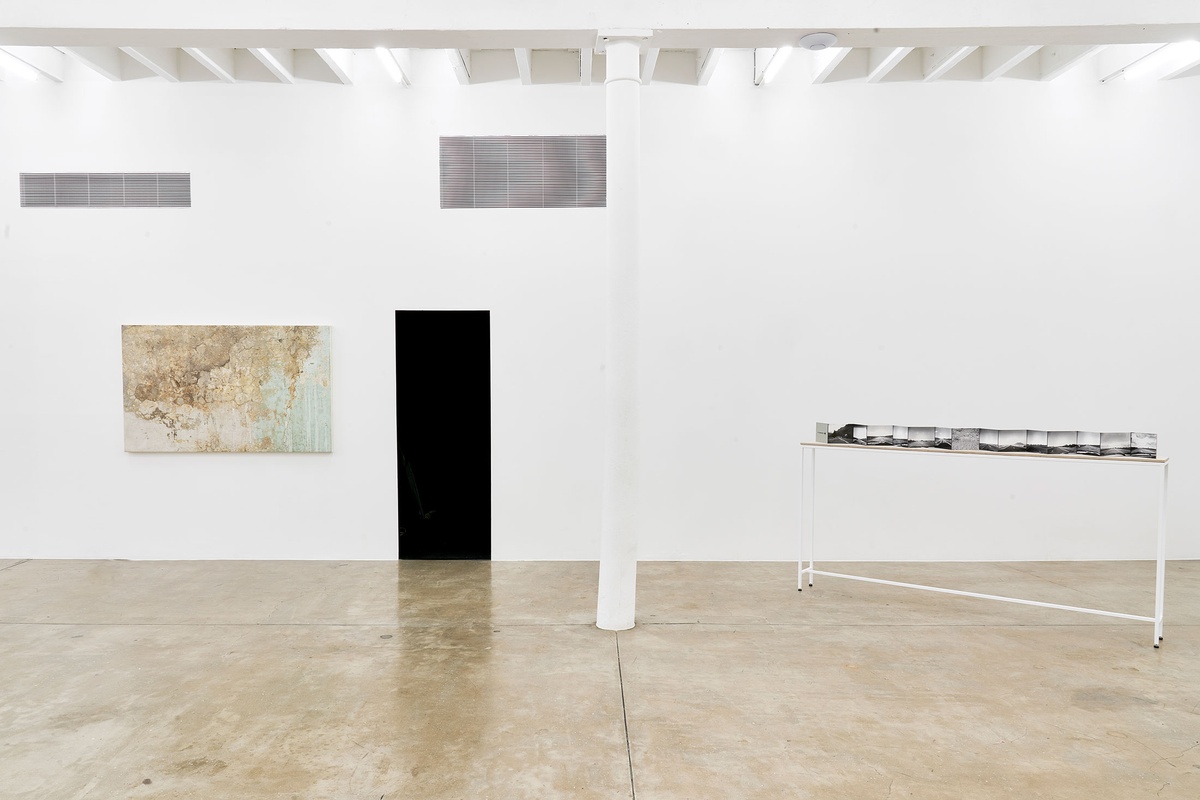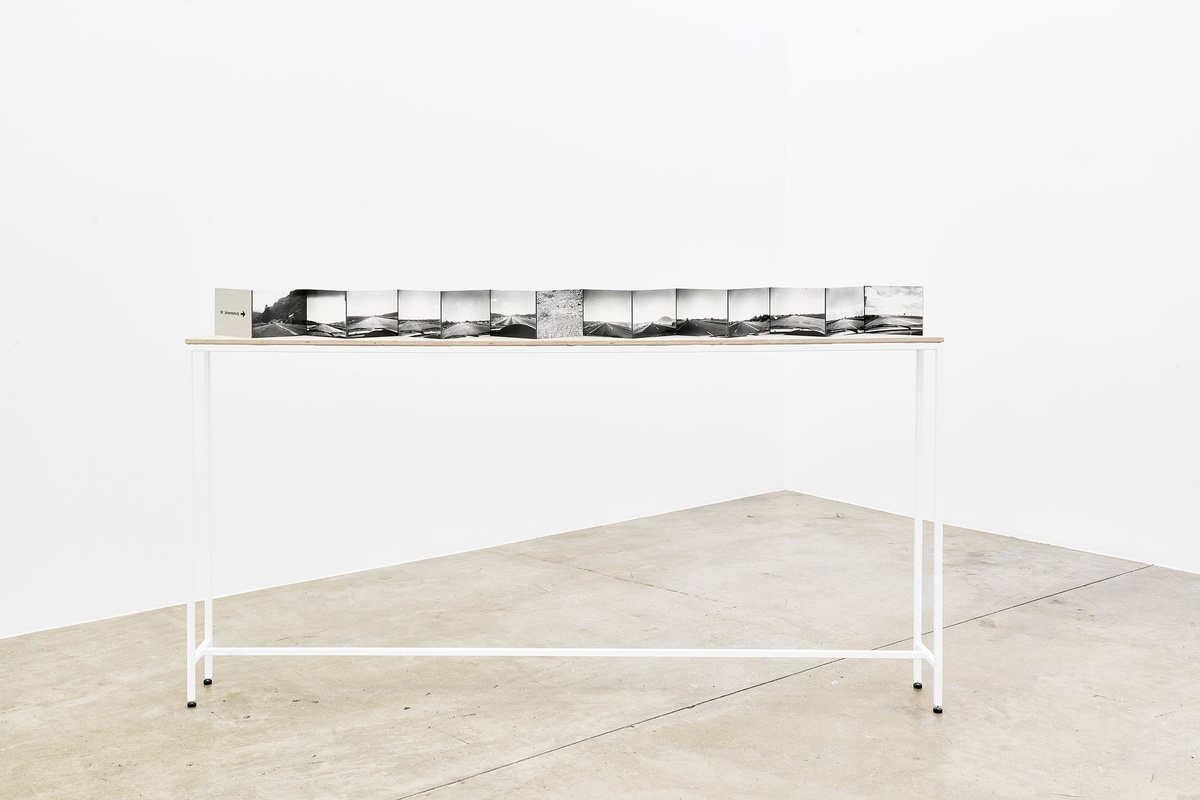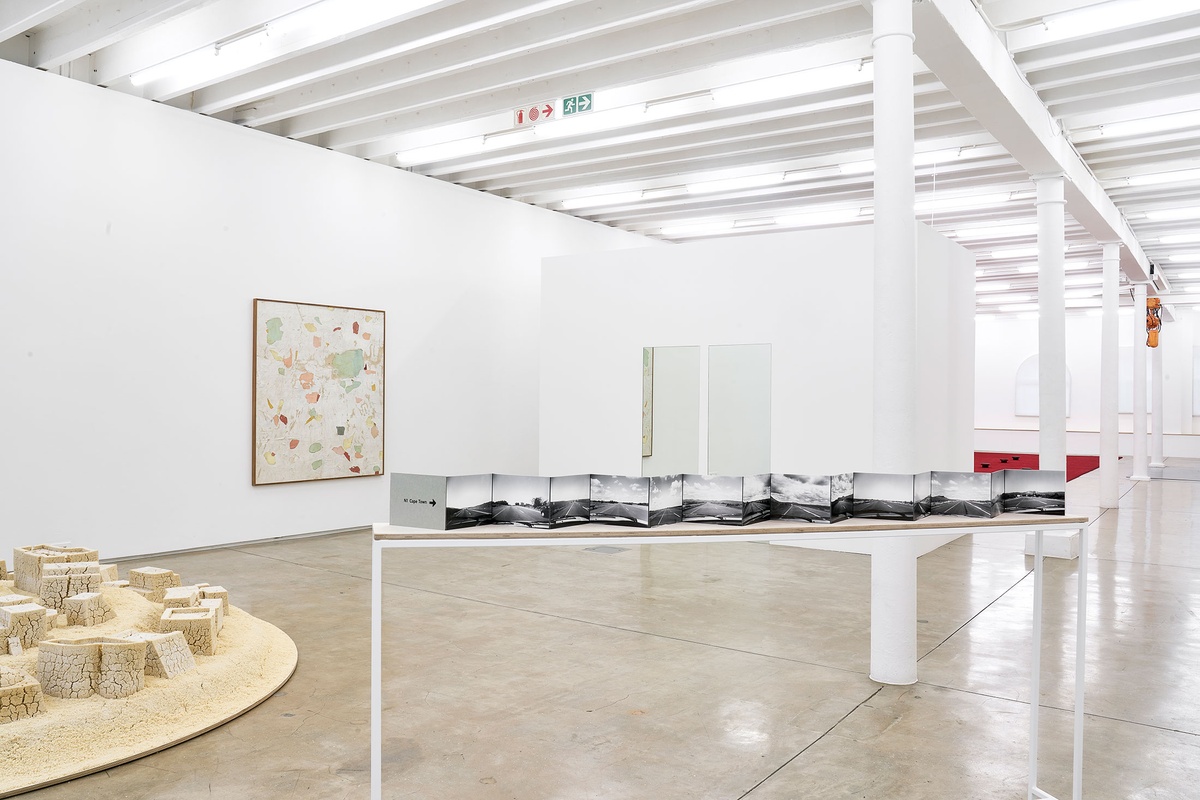Jo Ractliffe

Twenty-eight black-and-white landscape images, framed by the windshield of a Toyota Conquest and bound as an accordion, form N1: every 100 kilometres. Described by Jo Ractliffe as an “inventory of the road,” the book constitutes a two-fold experiment: firstly, in testing a recently-acquired Holga camera and secondly, in the consistency of a singular action – that of pointing the camera towards the road every 100 kilometres and releasing the shutter. Ractliffe photographed the route along the N1 between Johannesburg and Cape Town in 1996, and in the other direction in 1999.
–
The following is an excerpt from a conversation between Jo Ractliffe (J.R.) and Josh Ginsburg (J.G.) in preparation for The Future Is Behind Us, 1 December, 2022.
J.R. In a way, it was a work about nothing. I was going to drive across the country and reduce it to an image of nothing. A photograph every hundred kilometres. More or less. Photographing the road every hundred kilometres was an exercise – I had no initial intention for it as a work. I was taking the drive and so there it was – nothing better to do. But the disruption of that exercise – the donkey – precipitated an exhibition. It was one of those photographs that was more than the sum of its parts.
On one level, N1 is a perfect document of what the camera doesn’t see – or at least, those things that are absent – which also runs through the Angola work, the Vlakplaas work – all my work really. In this document though, the unseen is measured out in a very explicit yet invisible way.
One photograph every hundred kilometres and a portrait of a dead donkey: this became the project.
J.G. The unnameable, infinite road – the fuck-all landscape, as David Goldblatt would say – becomes an infinite loop rather than a moment in time; it gestures towards the unknown, the unlimited. And then: this disruption.
J.R. That’s what happens with all travel. Life happens; the journey is interrupted. I wanted to mark this interruption to the journey. I wanted to register something of how that interruption changes an experience of landscape. How – when I drive – I assume that space ‘belongs’ to me, I regard my view of the landscape as if it’s mine. While I was standing looking at the dead donkeys, I heard what sounded like a gunshot – it was so loud. It was a car pulling a caravan and the tyre blew. It gave me a fright, I almost dropped to the ground. But in that moment, I realised where I actually was. That was not my place, I was alien. I wanted to register something of being made strange in that moment. That’s why I made the billboards.
J.G. To my mind, the project survives most exquisitely in this book form. It offers an ordained view of the journey, it establishes and holds its sequence. The idea is made more vivid in the concertina.
J.R. Images time-travel, we know this. But I’m also drawn to the idea of the latent image – or latency. The things not pictured that are present in the photograph. It’s something magical… You are looking at more than you’re seeing. Photographing, for me, is a way of accessing those other unseen things.
Within the landscape – here as in Angola – my sense is there is no past, no present, no future. Pasts, presents and futures are all happening simultaneously.
J.G. The idea of ‘the future is behind us’ as a prompt encourages those modes I really admire – play and improvisation as opposed to pre-emptive pragmatism. You’re not looking ahead but instead working with what you can see. The improvisational mode doesn’t decide. It trusts. It’s intuitive – free within a set of given constraints. It sets the conditions for being everywhere and nowhere. Similarly, the feeling of your concertina book is one of infinity. The rule-based practice with which it was made – the structure – set you free. A present was afforded in the predetermination of the guiding choice. The rule is the thing that is being followed; whatever you find in following the rule – whatever photograph you take – must be accepted.
b.1961, Cape Town
To Jo Ractliffe, photography is “largely about guarding against loss,” of giving to memory an image, that it might be kept safe from forgetting. Her photographs more often speak of events past, considering the traces southern Africa’s recent conflicts have left on the land. She returns time and again to Angola, which remained at war for twenty-seven years, from the War of Independence, beginning in 1961, to the end of the Civil War in 2002. In 2007, she visited the country for the first time. “Until then, in my imagination,” Ractliffe writes, “Angola had been an abstract place…it was simply 'the border'. It remained, for me, largely a place of myth.” Absence is inscribed into all her photographs of that country, absence and the persistent presence of war's aftermath. More often, her titles alone establish their significance. Dusty landscapes are revealed to be minefields; rocky outcrops, the sites of mass graves. The atrocities of the past, now mute, are evoked in the bleak emptiness of the scenes she pictures. Ractliffe, preoccupied by all that photography necessarily leaves out, considers silence implicit to her medium. “I try to work in an area between the things we know and things we don't know, what sits outside the frame…these oblique and furtive ‘spaces of betweenness’.”




